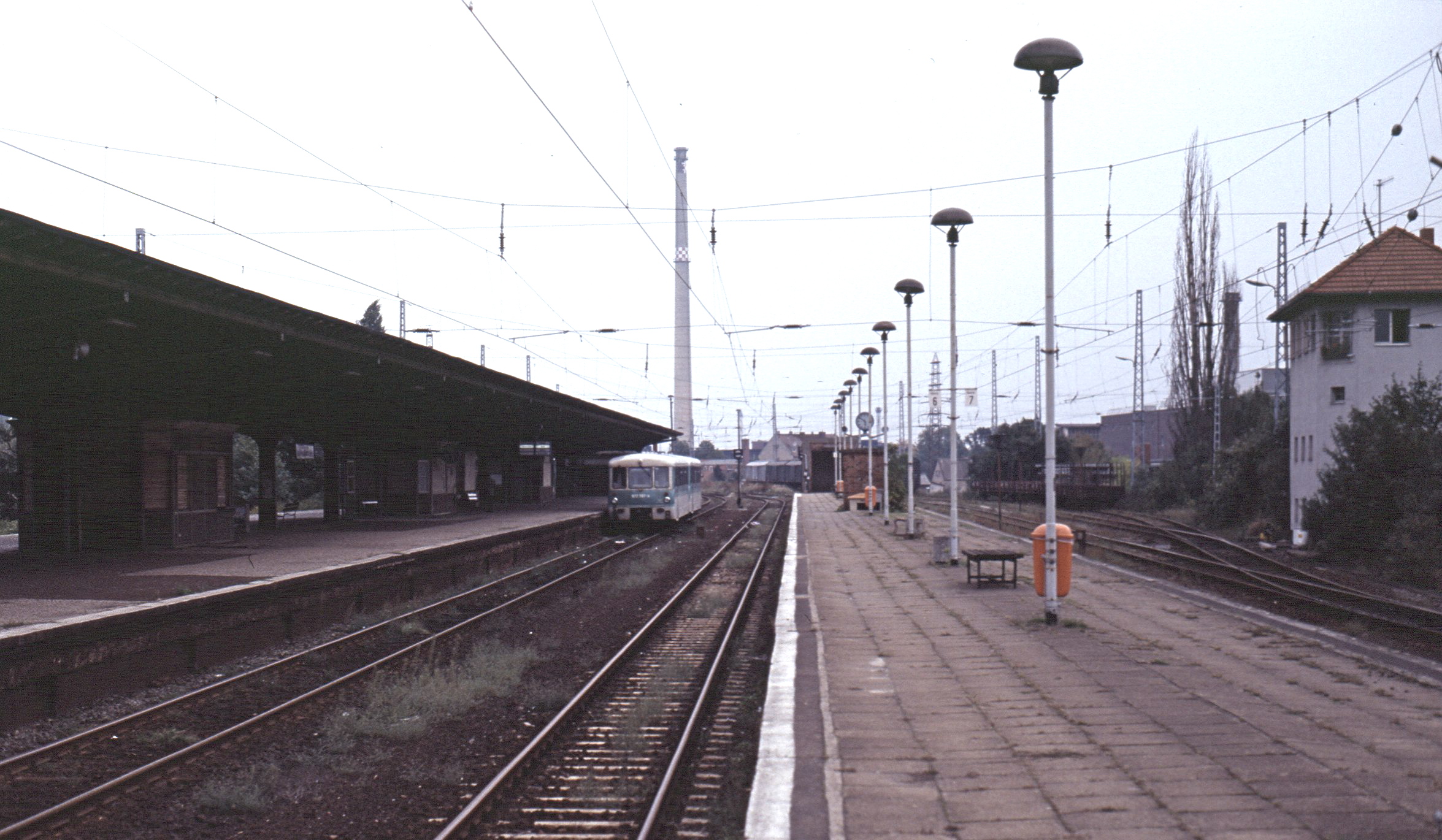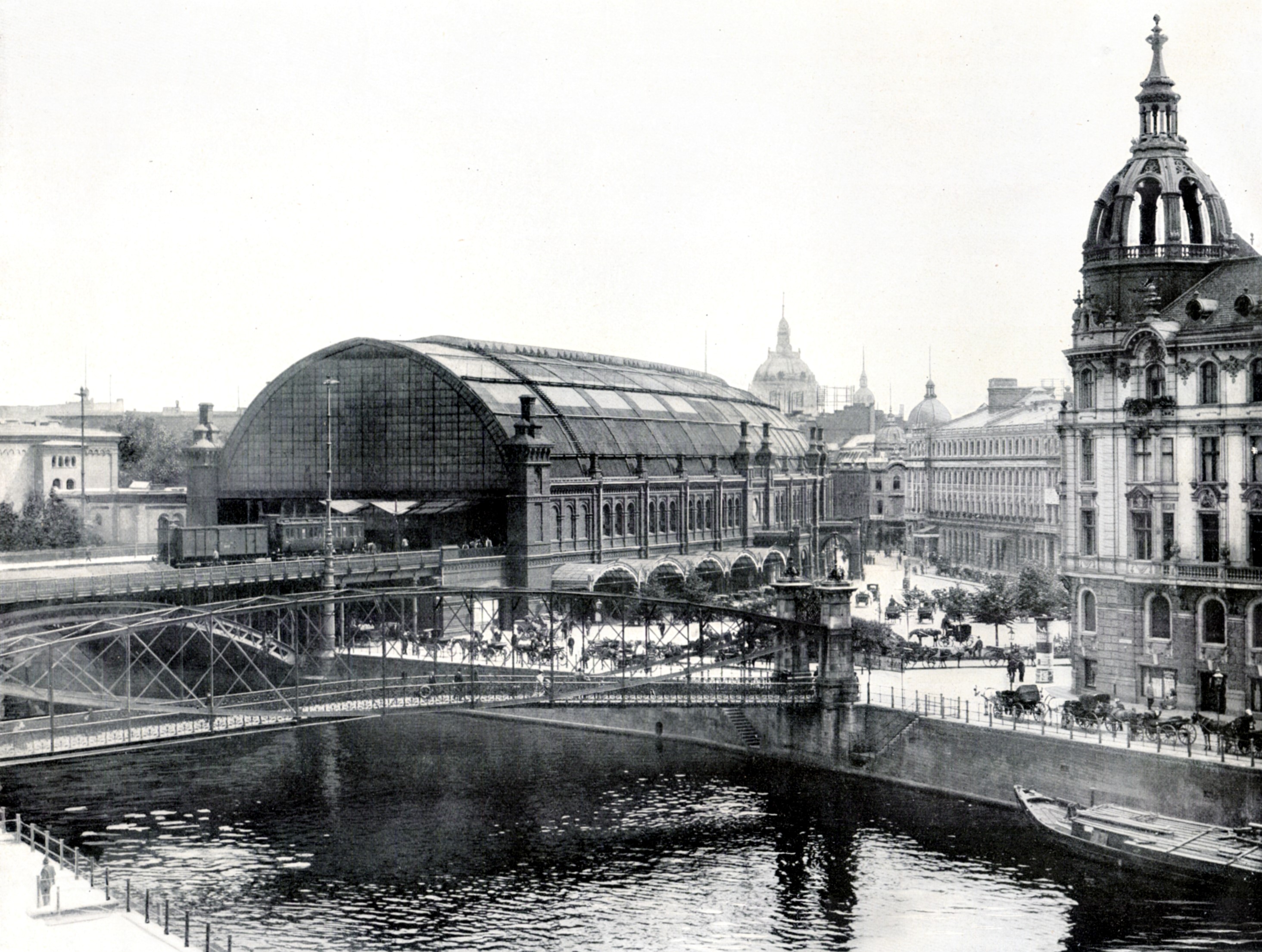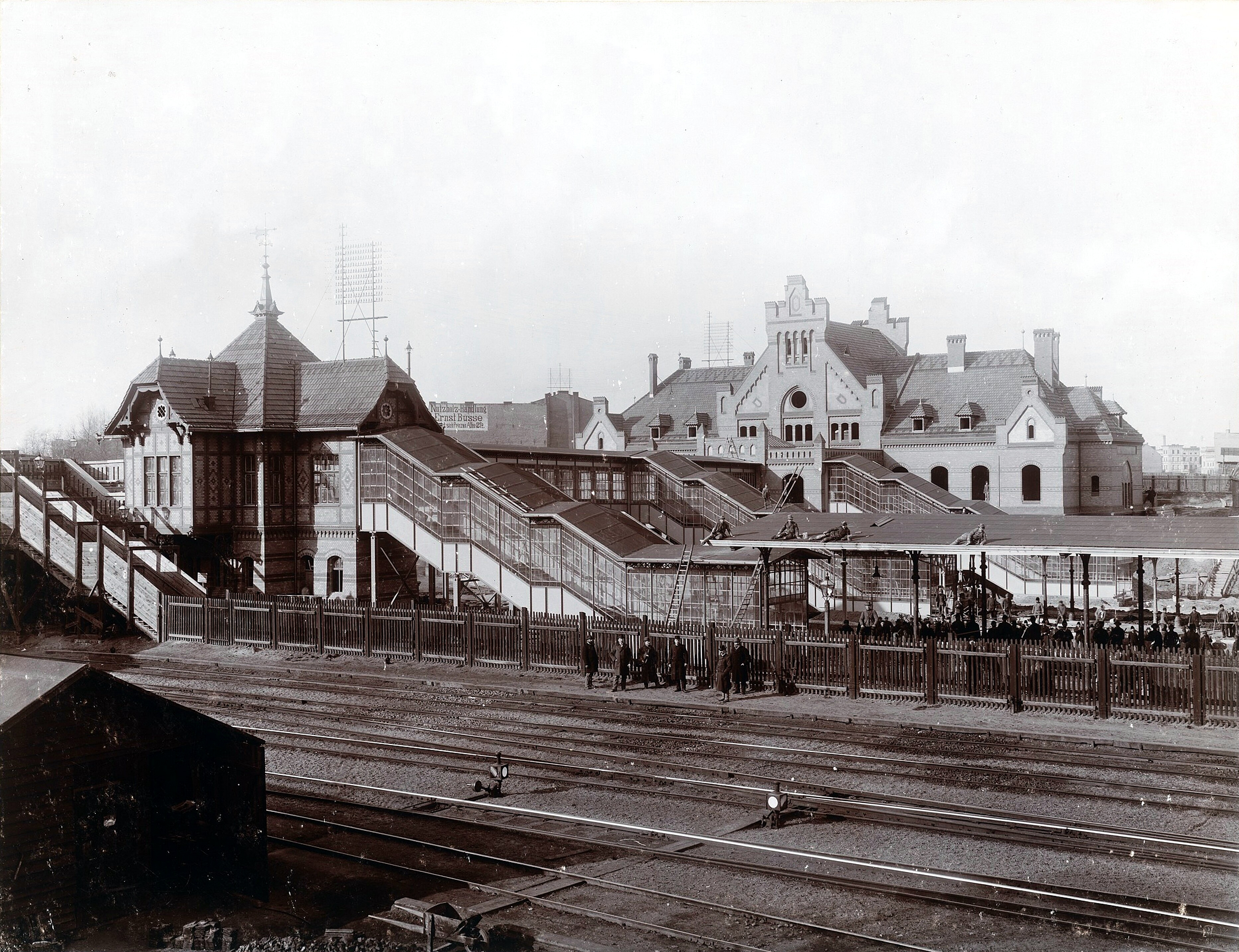|
Hennigsdorf Station
Hennigsdorf is a railway station in the Oberhavel district of Brandenburg, located in the town of Hennigsdorf. It is the northern terminus of the S-Bahn line as well as a station for regional passenger trains and freight services. History The station was opened together with the Berlin–Velten section of the ''Kremmener Bahn'' on 1 October 1893. The line was served by frequent commuter trains in particular after 1900, and in 1927 the line between Berlin and Velten was electrified with direct current supplied by a third-rail and became part of the Berlin S-Bahn system. From 1931 until 1945 Hennigsdorf station was also the northern terminus of the branch line from Spandau West which was operated by the Berlin tramways and figured as tramway route 120. As a consequence of World War II and the German partition, the station was close to the border with West Berlin. The S-Bahn traffic over the border was initially unhindered, but since 1954 a checkpoint station was established betwee ... [...More Info...] [...Related Items...] OR: [Wikipedia] [Google] [Baidu] |
Railway Station Types In Germany
The railways in Germany use several abbreviations to differentiate between various types of stations, stops, railway facilities and other places of rail service. Places with a set of points * – ' (railway station), defined as a place where trains may start, terminate, stop, overtake, meet or change directions, and that has at least one set of points. It can be additionally named after its purpose: ** – ', the main or central station of a town or city. Also the only abbreviation commonly found on station timetables and signs. ** – ' (passenger station), usually used to differentiate in places that have several types of stations, but only one passenger station. ** – ' ( long distance station) ** – ' (freight station) ** – ', a station only for operational tasks like train overtakes. ** – ' ( marshalling yard) ** – ' (transshipment station) ** – ', a station serving a power plant. ** – ' ( mail station) * – ' (part of a station), used when a station con ... [...More Info...] [...Related Items...] OR: [Wikipedia] [Google] [Baidu] |
World War II
World War II or the Second World War, often abbreviated as WWII or WW2, was a world war that lasted from 1939 to 1945. It involved the vast majority of the world's countries—including all of the great powers—forming two opposing military alliances: the Allies and the Axis powers. World War II was a total war that directly involved more than 100 million personnel from more than 30 countries. The major participants in the war threw their entire economic, industrial, and scientific capabilities behind the war effort, blurring the distinction between civilian and military resources. Aircraft played a major role in the conflict, enabling the strategic bombing of population centres and deploying the only two nuclear weapons ever used in war. World War II was by far the deadliest conflict in human history; it resulted in 70 to 85 million fatalities, mostly among civilians. Tens of millions died due to genocides (including the Holocaust), starvation, ma ... [...More Info...] [...Related Items...] OR: [Wikipedia] [Google] [Baidu] |
Railway Stations In Brandenburg
Rail transport (also known as train transport) is a means of transport that transfers passengers and goods on wheeled vehicles running on rails, which are incorporated in Track (rail transport), tracks. In contrast to road transport, where the vehicles run on a prepared flat surface, rail vehicles (rolling stock) are directionally guided by the tracks on which they run. Tracks usually consist of steel rails, installed on Railroad tie, sleepers (ties) set in track ballast, ballast, on which the rolling stock, usually fitted with metal wheels, moves. Other variations are also possible, such as "slab track", in which the rails are fastened to a concrete foundation resting on a prepared subsurface. Rolling stock in a rail transport system generally encounters lower friction, frictional resistance than rubber-tyred road vehicles, so passenger and freight cars (carriages and wagons) can be coupled into longer trains. The rail transport operations, operation is carried out by a ... [...More Info...] [...Related Items...] OR: [Wikipedia] [Google] [Baidu] |
Berlin S-Bahn Stations
Berlin ( , ) is the capital and largest city of Germany by both area and population. Its 3.7 million inhabitants make it the European Union's most populous city, according to population within city limits. One of Germany's sixteen constituent states, Berlin is surrounded by the State of Brandenburg and contiguous with Potsdam, Brandenburg's capital. Berlin's urban area, which has a population of around 4.5 million, is the second most populous urban area in Germany after the Ruhr. The Berlin-Brandenburg capital region has around 6.2 million inhabitants and is Germany's third-largest metropolitan region after the Rhine-Ruhr and Rhine-Main regions. Berlin straddles the banks of the Spree, which flows into the Havel (a tributary of the Elbe) in the western borough of Spandau. Among the city's main topographical features are the many lakes in the western and southeastern boroughs formed by the Spree, Havel and Dahme, the largest of which is Lake Müggelsee. Due to its location ... [...More Info...] [...Related Items...] OR: [Wikipedia] [Google] [Baidu] |
Berlin Friedrichstraße Station
Berlin Friedrichstraße () is a railway station in the German capital Berlin. It is located on the Friedrichstraße, a major north-south street in the Mitte district of Berlin, adjacent to the point where the street crosses the river Spree. Underneath the station is the U-Bahn station ''Friedrichstraße''. Due to its central location in Berlin and its proximity to attractions such as the Unter den Linden boulevard, the Brandenburg Gate and the Reichstag, the station is a favorite destination for tourists. At the same time, it is the main junction for regional traffic in Berlin, measured by the number of passengers. During the Cold War, Friedrichstraße became famous for being a station that was located entirely in East Berlin, yet continued to be served by S-Bahn and U-Bahn trains from West Berlin as well as long distance trains from countries west of the Iron Curtain. The station also was a major border crossing between East and West Berlin. History The initial station ... [...More Info...] [...Related Items...] OR: [Wikipedia] [Google] [Baidu] |
Berlin-Gesundbrunnen Station
Berlin Gesundbrunnen station (german: Bahnhof Berlin Gesundbrunnen) is a railway station Rail transport (also known as train transport) is a means of transport that transfers passengers and goods on wheeled vehicles running on rails, which are incorporated in tracks. In contrast to road transport, where the vehicles run on a pre ... in Berlin, Germany. It is situated in the Gesundbrunnen (Berlin), Gesundbrunnen district, part of the central Mitte borough, as an interconnection point between the northern ''Berlin Ringbahn, Ringbahn'' and ''Berlin Nord-Süd Tunnel, Nord-Süd Tunnel'' lines of the Berlin S-Bahn, as well as a regional and long distance station of the Deutsche Bahn network. The station is operated by the DB Station&Service subsidiary of Deutsche Bahn AG and is classified as a German railway station categories, Category 1 station, one of 21 in Germany and four in Berlin, the others being Berlin Hauptbahnhof, Berlin Südkreuz and Berlin Ostbahnhof. History When ... [...More Info...] [...Related Items...] OR: [Wikipedia] [Google] [Baidu] |
Regional-Express
In Germany, Luxembourg and Austria, the Regional-Express (RE, or in Austria: REX) is a type of regional train. It is similar to a semi-fast train, with average speed at about 70–90 km/h (top speed often 160 km/h) as it calls at fewer stations than '' Regionalbahn'' or S-Bahn trains, but stops more often than ''InterCity'' services. Operations The first Regional-Express services were operated by DB Regio, though since the liberalisation of the German rail market (''Bahnreform'') in the 1990s many operators have received franchise rights on lines from the federal states. Some private operators currently operate trains that are similar to a Regional-Express service, but have decided to use their own names for the sake of brand awareness instead. Regional-Express services are carried out with a variety of vehicles such as DMUs (of Class 612), EMUs (of Class 425 or 426) or, most commonly, electric or diesel locomotives with double-deck cars, the latter often with ... [...More Info...] [...Related Items...] OR: [Wikipedia] [Google] [Baidu] |
Berlin Wall
The Berlin Wall (german: Berliner Mauer, ) was a guarded concrete barrier that encircled West Berlin from 1961 to 1989, separating it from East Berlin and East Germany (GDR). Construction of the Berlin Wall was commenced by the government of the GDR on 13 August 1961. It included guard towers placed along large concrete walls, accompanied by a wide area (later known as the "death strip") that contained anti-vehicle trenches, beds of nails and other defenses. The Eastern Bloc portrayed the Wall as protecting its population from fascist elements conspiring to prevent the "will of the people" from building a socialist state in the GDR. The authorities officially referred to the Berlin Wall as the ''Anti-Fascist Protection Rampart'' (german: Antifaschistischer Schutzwall, ). The West Berlin city government sometimes referred to it as the "Wall of Shame", a term coined by mayor Willy Brandt in reference to the Wall's restriction on freedom of movement. Along with the separat ... [...More Info...] [...Related Items...] OR: [Wikipedia] [Google] [Baidu] |
Königs Wusterhausen
Königs Wusterhausen () is a town in the Dahme-Spreewald district of the state of Brandenburg in Germany a few kilometers outside Berlin. Geography Geographical location Königs Wusterhausen – or "KW" () as it is often called locally – lies on the Notte canal and the river Dahme southeast of Berlin. Much further away to the west lies the state capital Potsdam. The abbreviation "KW" is also a reminder of the Königs Wusterhausen radio transmitter as "KW" is also the abbreviation for "Kilowatt" and "Kurzwelle" (German: "Shortwave") Parts of town Königs Wusterhausen is the biggest town in the Dahme-Spreewald district. The municipal reforms in 2003 brought about seven amalgamations, since which time the communities of Zeesen, Kablow, Diepensee, Niederlehme, Senzig, Wernsdorf and Zernsdorf have belonged to Königs Wusterhausen, the town's land area has grown sixfold, and its population has doubled. Demography File:Bevölkerungsentwicklung KönigsWusterhausen.pdf, D ... [...More Info...] [...Related Items...] OR: [Wikipedia] [Google] [Baidu] |
Wildau
Wildau () is a German town of the state of Brandenburg, located in the district of Dahme-Spreewald. It is located close to Berlin and easily reached by the ''S-Bahn''. As of 2019 its population was 10,404 inhabitants. History The history of Wildau began with fisherman's families that settled by the Dahme River and then came to deliver sand, gravel and bricks from the region by boat to Berlin. Mechanical engineering put Wildau on the map as a location for industry. In 1897, the company Schwartzkopff GmbH established a locomotive factory here, and built housing for the factory workers that is today is under cultural heritage management. During the Second World War, local factories were involved in armaments production. After the war, they became East Germany's state enterprise in heavy engineering. After German unification, the factories were mostly shut down by the Treuhand. In the region around Wildau, numerous technology and business parks have been set up in recent years ... [...More Info...] [...Related Items...] OR: [Wikipedia] [Google] [Baidu] |
Berlin Outer Ring
The Berlin outer ring (german: Berliner Außenring, BAR) is a long double track electrified railway, originally built by the German Democratic Republic to bypass West Berlin in preparation for the building of the Berlin Wall during the division of Germany. It was developed by East Germany for economic, transport policy, and military reasons between 1951 and 1961 and included parts of some older lines (Outer Freight Ring, Jüterbog–Nauen railway, and Michendorf–Großbeeren railway). Without the completion of the outer ring it would not have been possible to build the Berlin Wall, sealing off West Berlin, without disrupting East Germany’s transport links. The Potsdam-Schönefeld Expressway was built for similar reasons. The term ''Outer ring'' is used to distinguish the line from the Ring line of inner Berlin. Route Starting at the Anhalt line in the south, the outer ring runs from Genshagener Heide to Schönefeld Airport, Grünau Cross, Wuhlheide, Schönfließ, Go ... [...More Info...] [...Related Items...] OR: [Wikipedia] [Google] [Baidu] |





_(2).jpg)
